As the last of the easily accessible valley-bottom old growth trees have been felled, Port Alberni, once the heart of Vancouver Island’s logging industry, has seen its economy steadily decline over the past few decades. Fortunately there’s a growing interest in the Alberni Valley’s natural resources that can’t be extracted, and the are has become increasingly popular among hikers, mountain bikers, and other types of outdoorsy people. And it’s not surprising – guarded by mountains in almost every direction, there’s a lot of potential for outdoor recreation in and around Port Alberni. Those high mountains surrounding the town offer summit hikes with some incredible views, as well as some beautiful streams cascading down, cutting through the rock. And whenever you have the sort of elevation changes you can find in the Alberni Valley, you’re sure to find some impressive waterfalls.
Port Alberni is still not a major tourism destination , and many of the trails to its many waterfalls are still known mostly by locals only, if barely at all. For that reason and for the inherent natural beauty of the region, exploring the waterfalls near Port Alberni is one of my favourite things to do on Vancouver Island.
Not located in Port Alberni? Check out my list of awesome waterfalls near Victoria!
Continue reading this blog post for everything you need to know to experience these 11 awesome waterfalls near Port Alberni for yourself, including distance, elevation gain, how to get there, the best time to visit, and lots of photos of my experience.
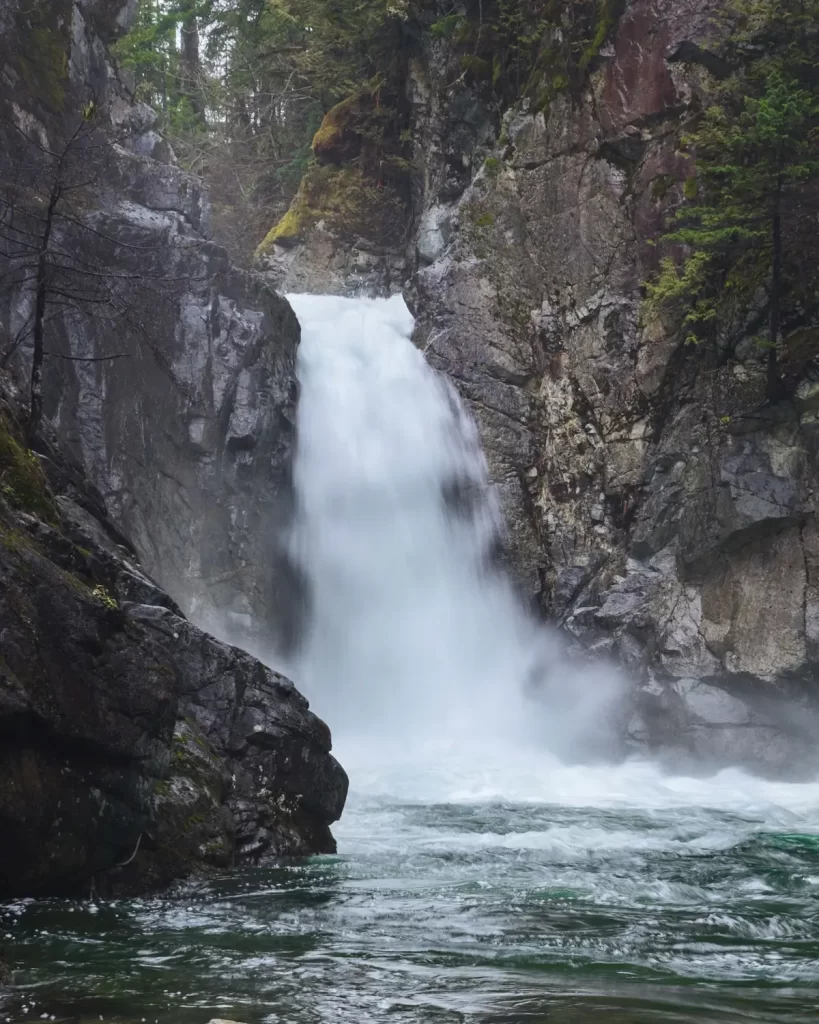
Tips for Visiting Port Alberni Waterfalls
I also highly recommend reading up on Leave No Trace principles before heading anywhere into the outdoors in general. Following these important principles basically means doing your best to leave beautiful places like these Port Alberni waterfalls as good (if not better) than you found them, both for their preservation and for the enjoyment of other visitors.
When in the outdoors it’s important to avoid harmful practices such as disturbing plants or rock-stacking, or removing any natural object from flowers to rocks, as it’s important to leave the environment as natural as possible for the animals and for fellow hikers to enjoy in perpetuity. As many flowers as there are, there are few enough that if we all took one, then there wouldn’t be any left. Take only photos, leave only footprints.
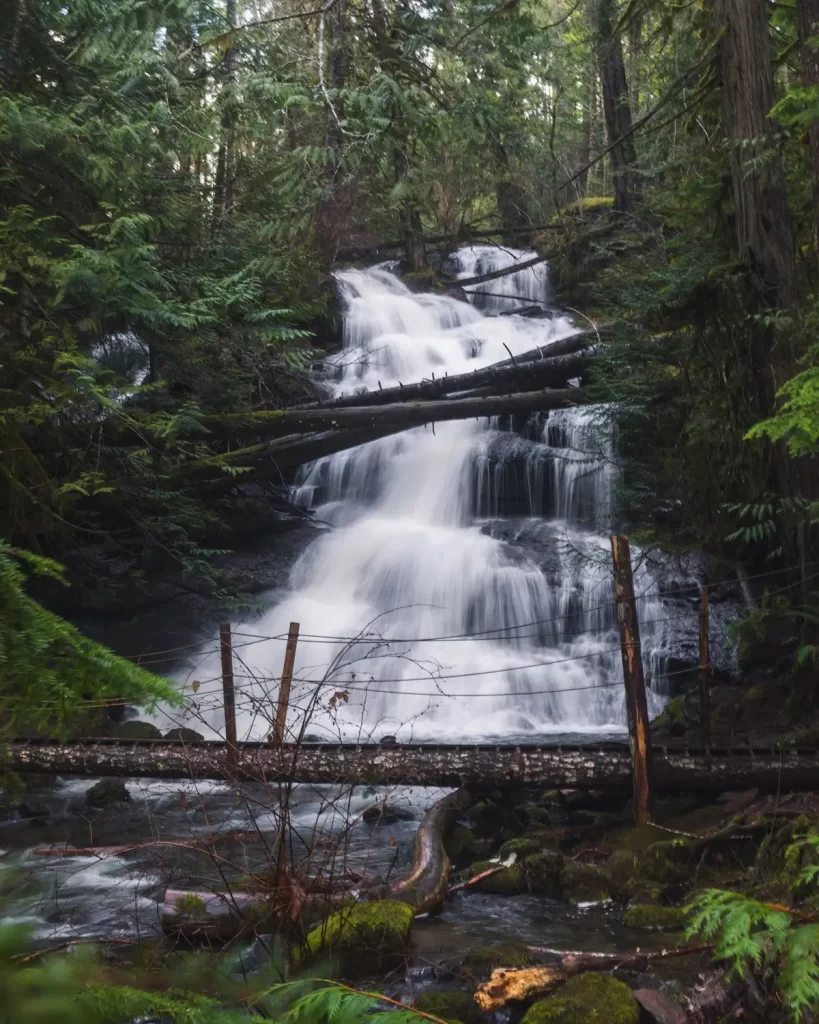
When to Visit Waterfalls Near Port Alberni
Most waterfalls on Vancouver Island are primarily fed by rainwater, fortunately for local waterfall chasers Nanaimo is located in one one of the rainiest and wettest regions in all of Canada. During the months of winter when the rest of Canada is blanketed in snow, Port Alberni rains and rains and rains. For this reason winter and early spring are the best seasons to visit waterfalls in the region. Visitors to Port Alberni in the summer can expect to find many of the waterfalls listed here significantly diminished, with many waterfalls drying up almost completely during the drier summer and early autumn months.
Best Port Alberni Waterfalls
Ginger Creek Falls
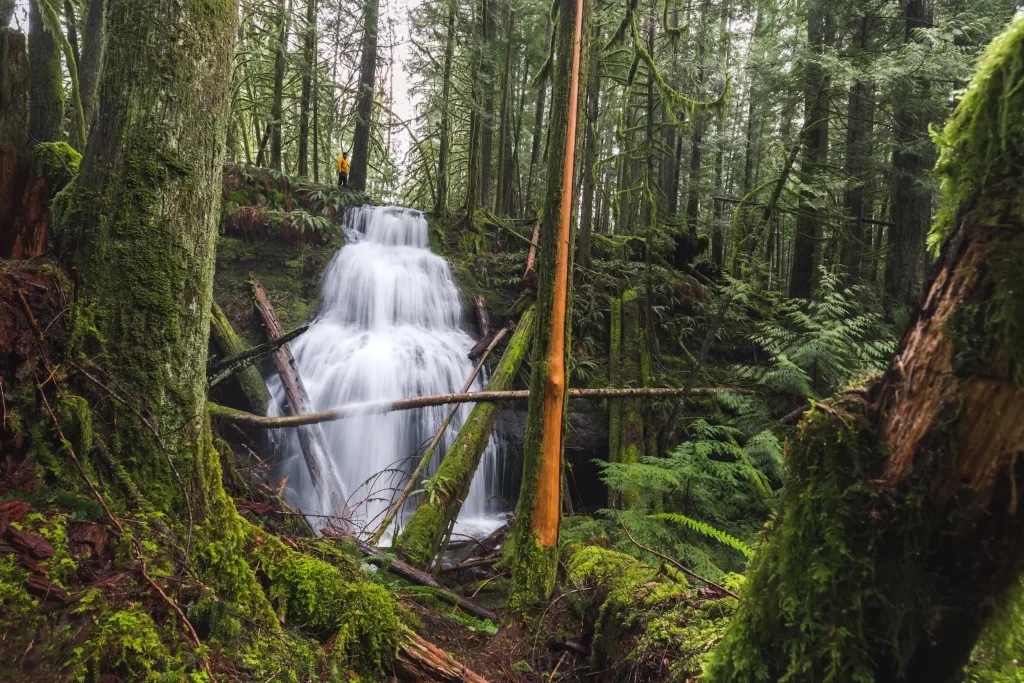
Ginger Creek Falls is probably the least-known Port Alberni waterfall on this list. Located on the same trail network as another waterfall – Stokes Falls – Ginger Creek Falls is missed by most hikers. Despite its relatively obscurity, its a fairly easy hike, and located right off of the highway when you’re driving into town from the east. This Port Alberni waterfall is located in close proximity to several others on this list, making it easy to combine hikes in order to see multiple in one day.
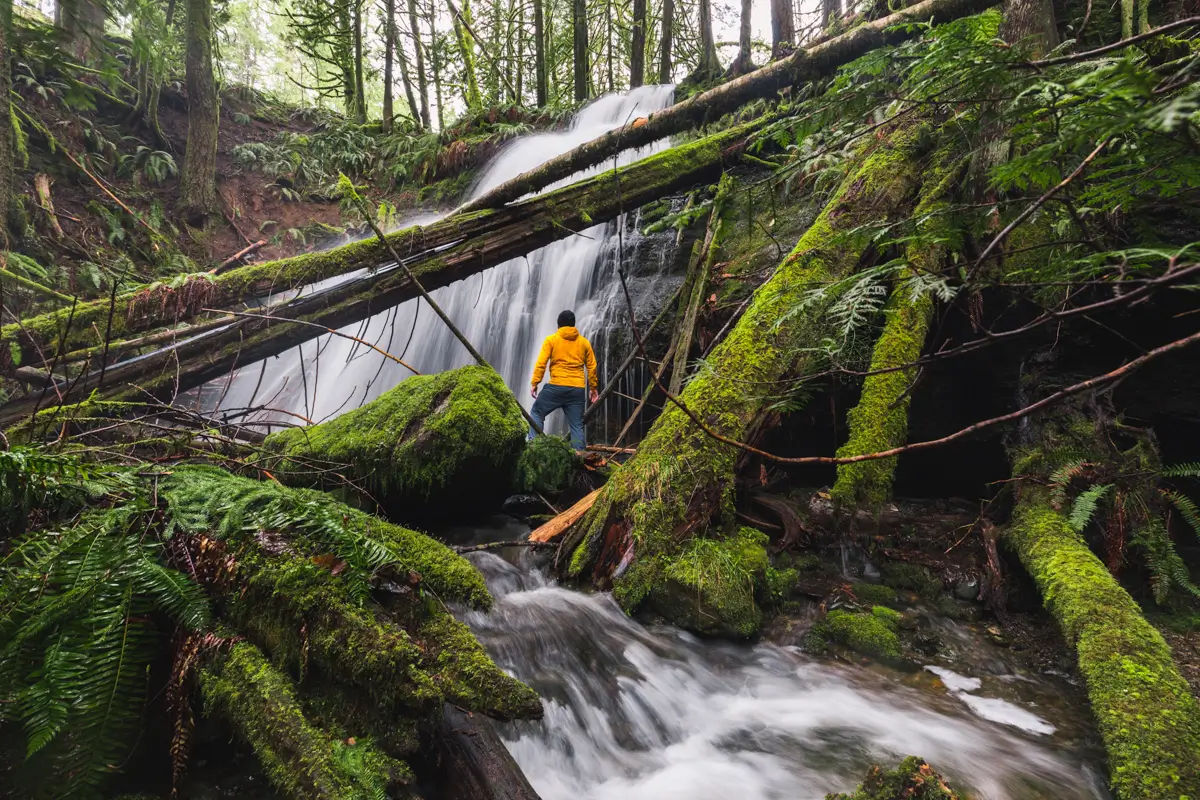
Stokes Creek Falls
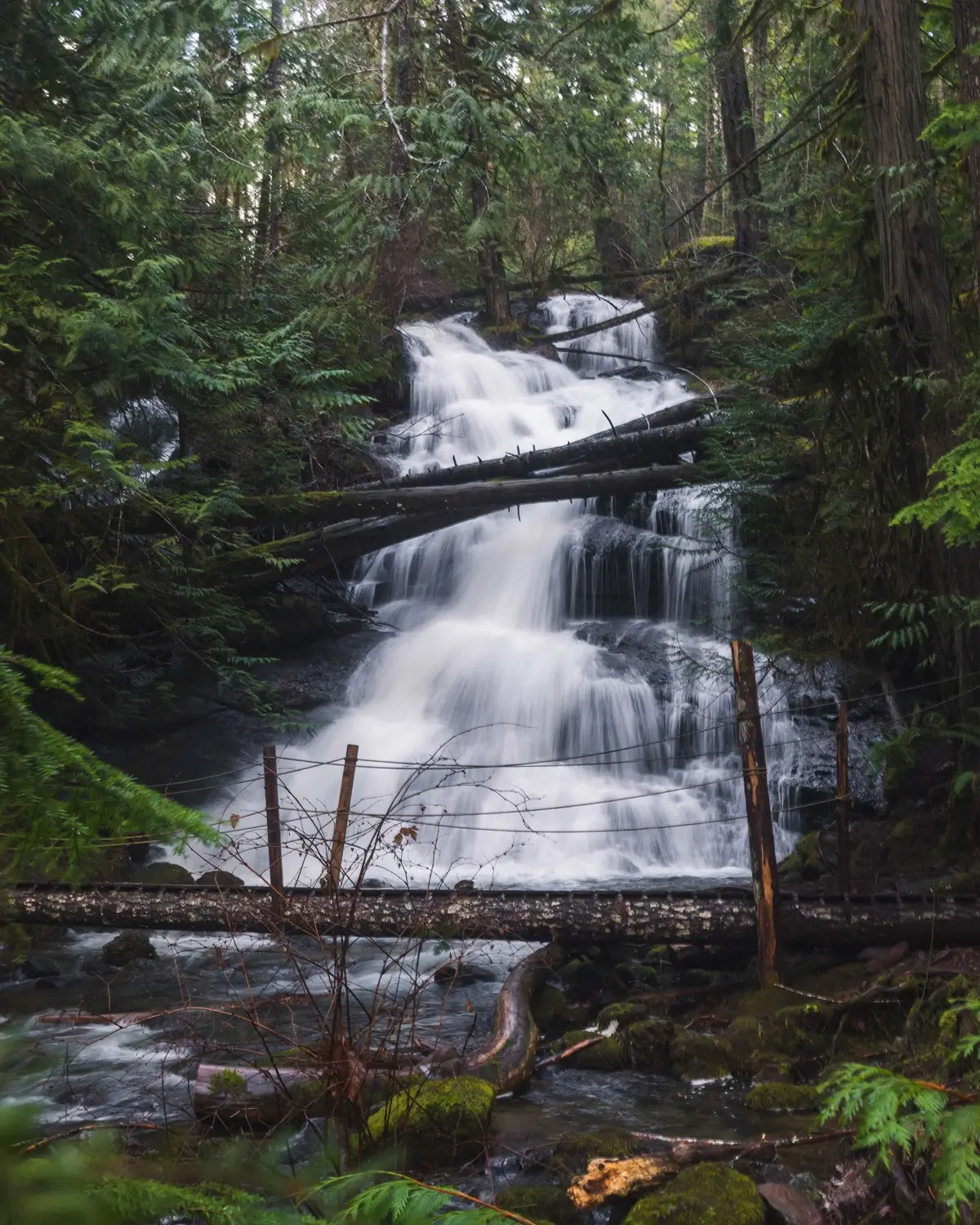
Stokes Creek Falls is a well-known Port Alberni waterfall located on the same trail network as Ginger Creek Falls. Visiting both waterfalls is easily doable, with only about a ten minute walk between the two. This fantastic Port Alberni waterfall is located very close to town, right off of the highway when you’re driving in from the east.
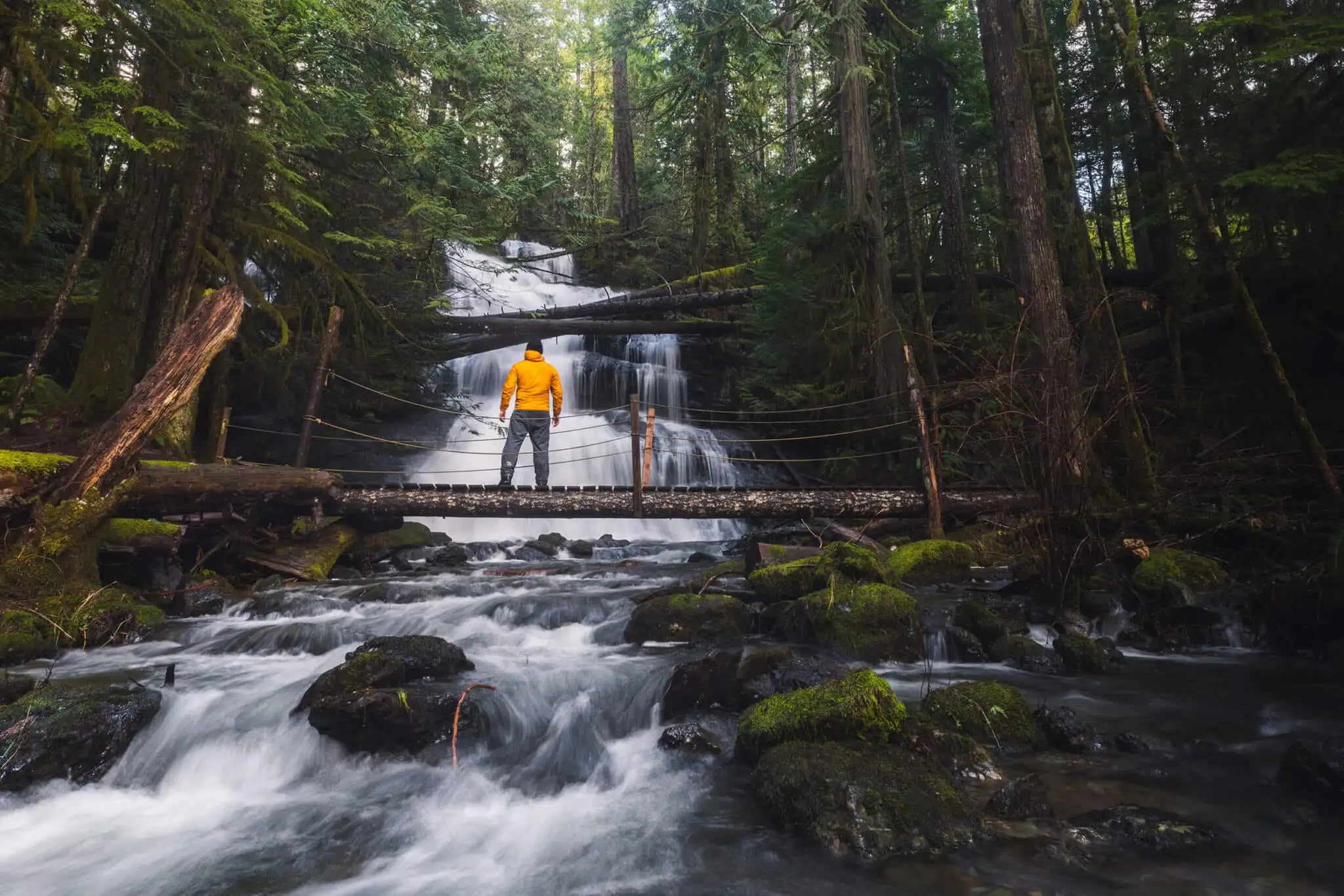
Weiner Falls
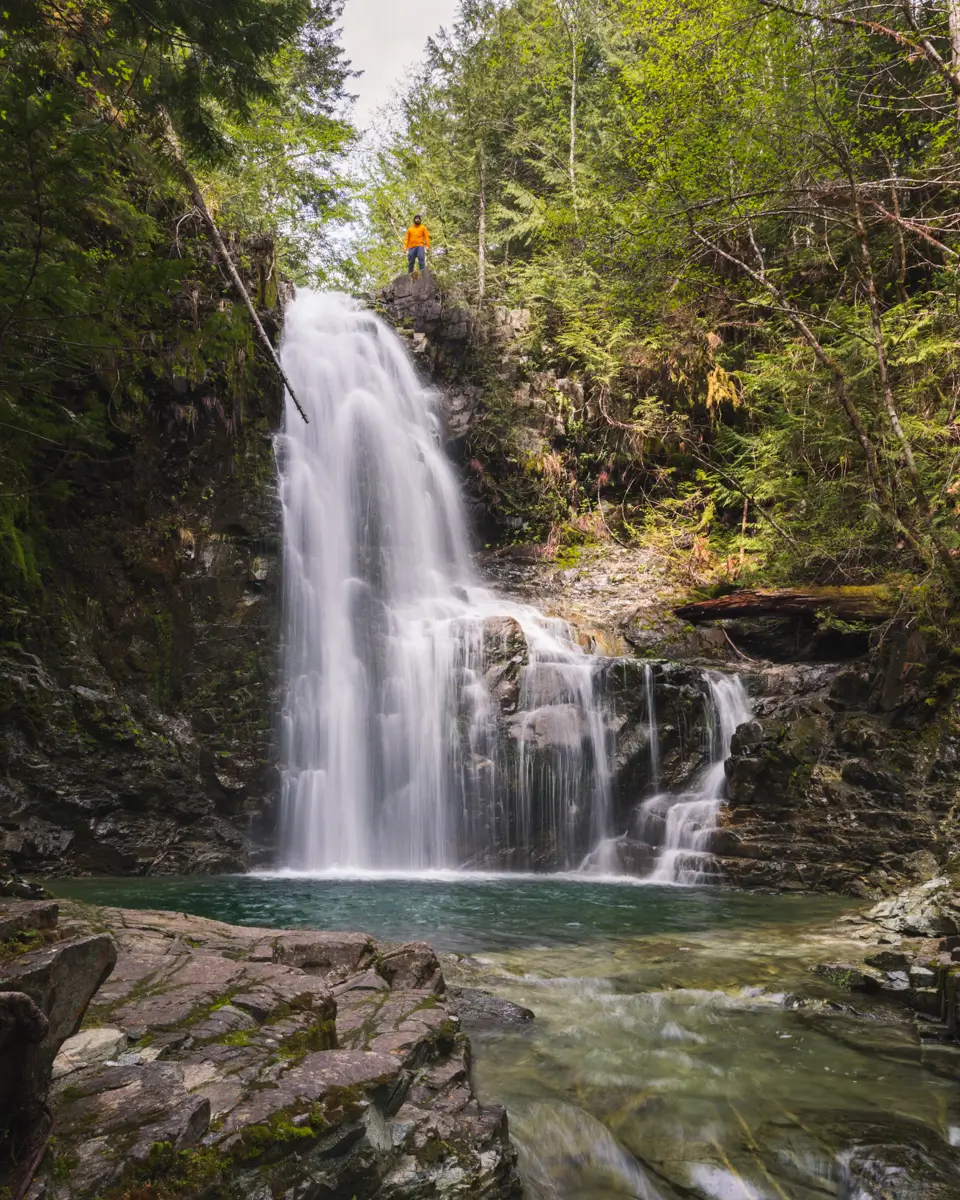
Weiner Falls is one of my favourite Port Alberni waterfalls, and despite being relatively unknown for the longest time, has started to see its popularity increase in recent years. Though its a short and easy walk to the top of the falls, climbing down to the base of the falls requires a little bit of guts, as it requires a short but steep climb down the side of the hillside where ropes have been added to assist. It’s a lot of fun if you don’t mind using your hands, and the refreshing waterfall and its gorgeous blue-green pool make it all worth it.
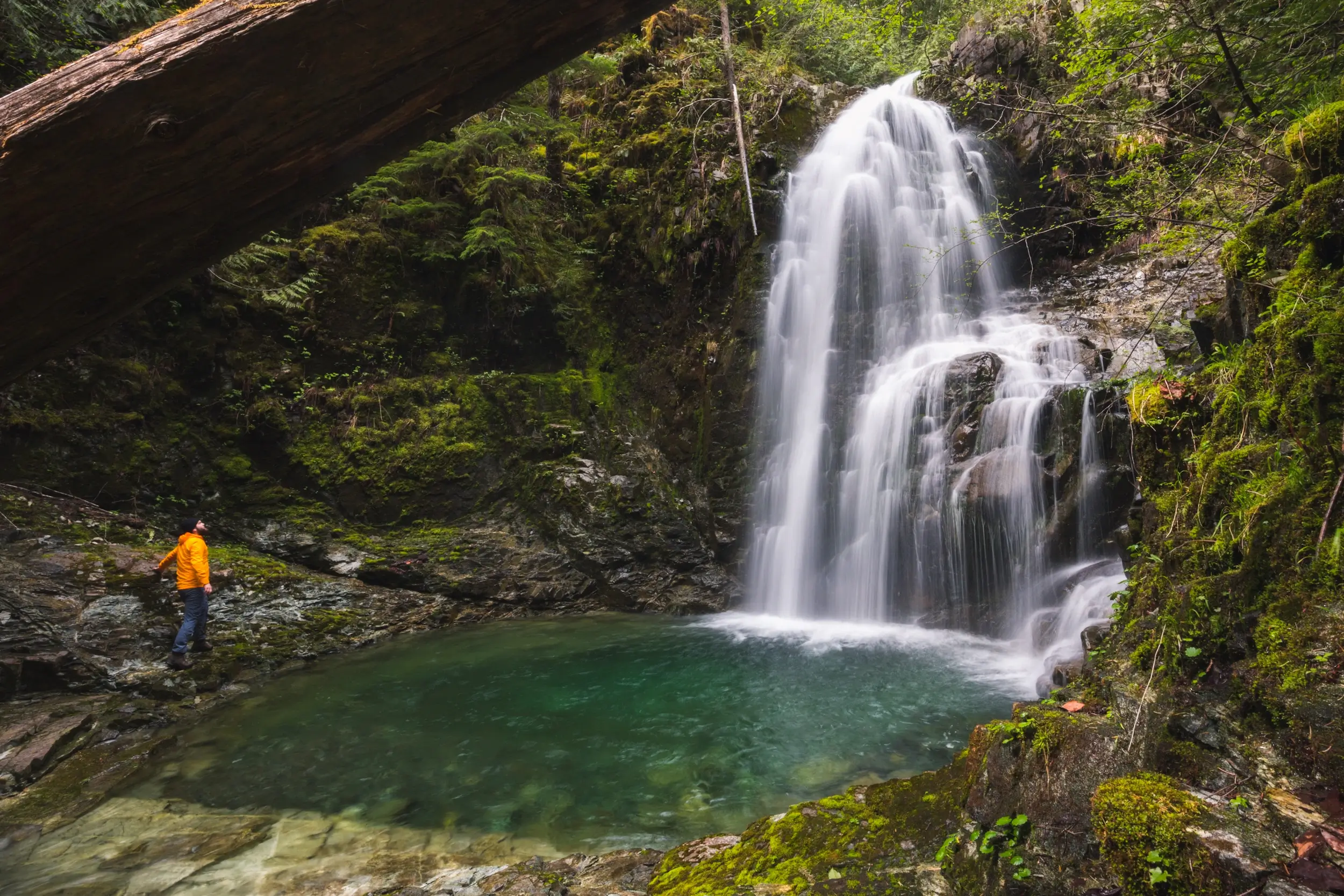
China Creek Falls
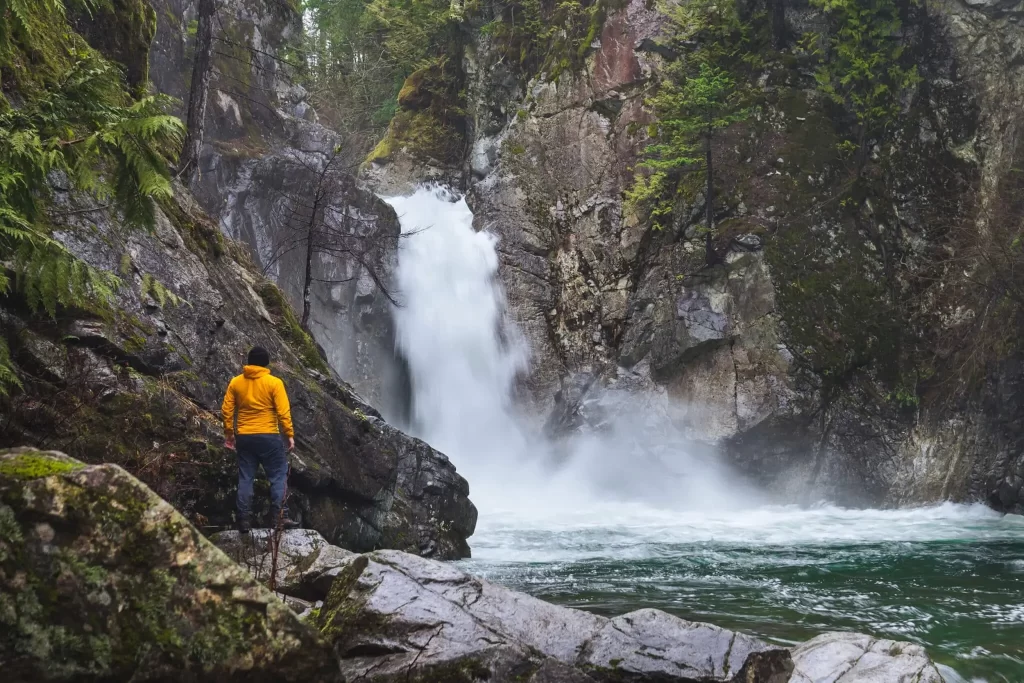
China Creek Falls is one of my favourite waterfalls in the Alberni Valley, and a must-visit if you’re spending time in Port Alberni. The hike to this waterfall starts from a logging road and follows closely along China Creek, sometimes steeply and assisted by ropes. The forest along the way is gorgeous and the views at the end of the impressive waterfall crashing down make for a great reward.

Cold Creek Falls
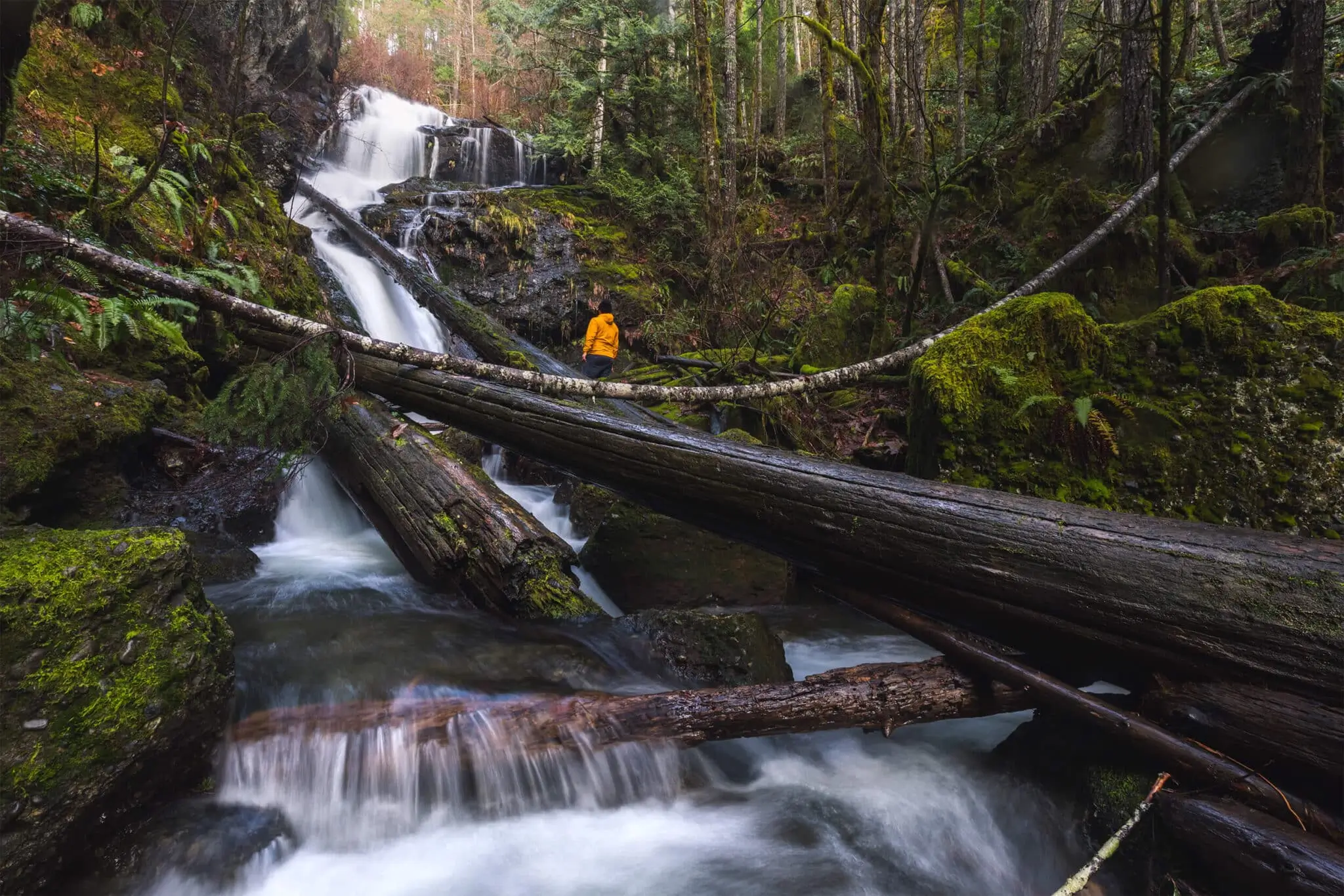
Cold Creek Falls is one of the least-visited waterfalls near Port Alberni. The walk there is straightforward and unchallenging, and the many drops of the waterfall combines with the lush forest surroundings create a fantastic atmosphere at the hike’s end.
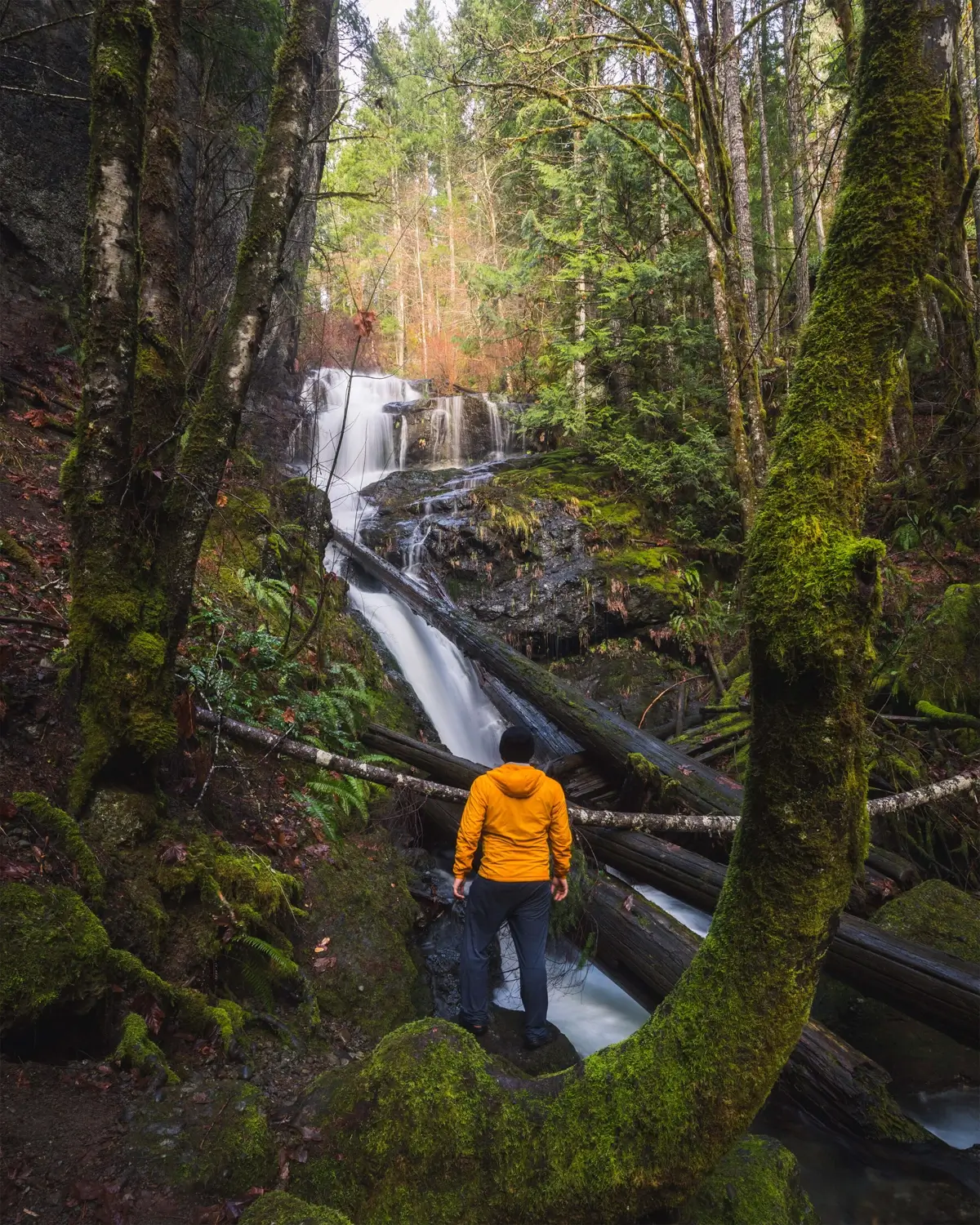
Hole in the Wall
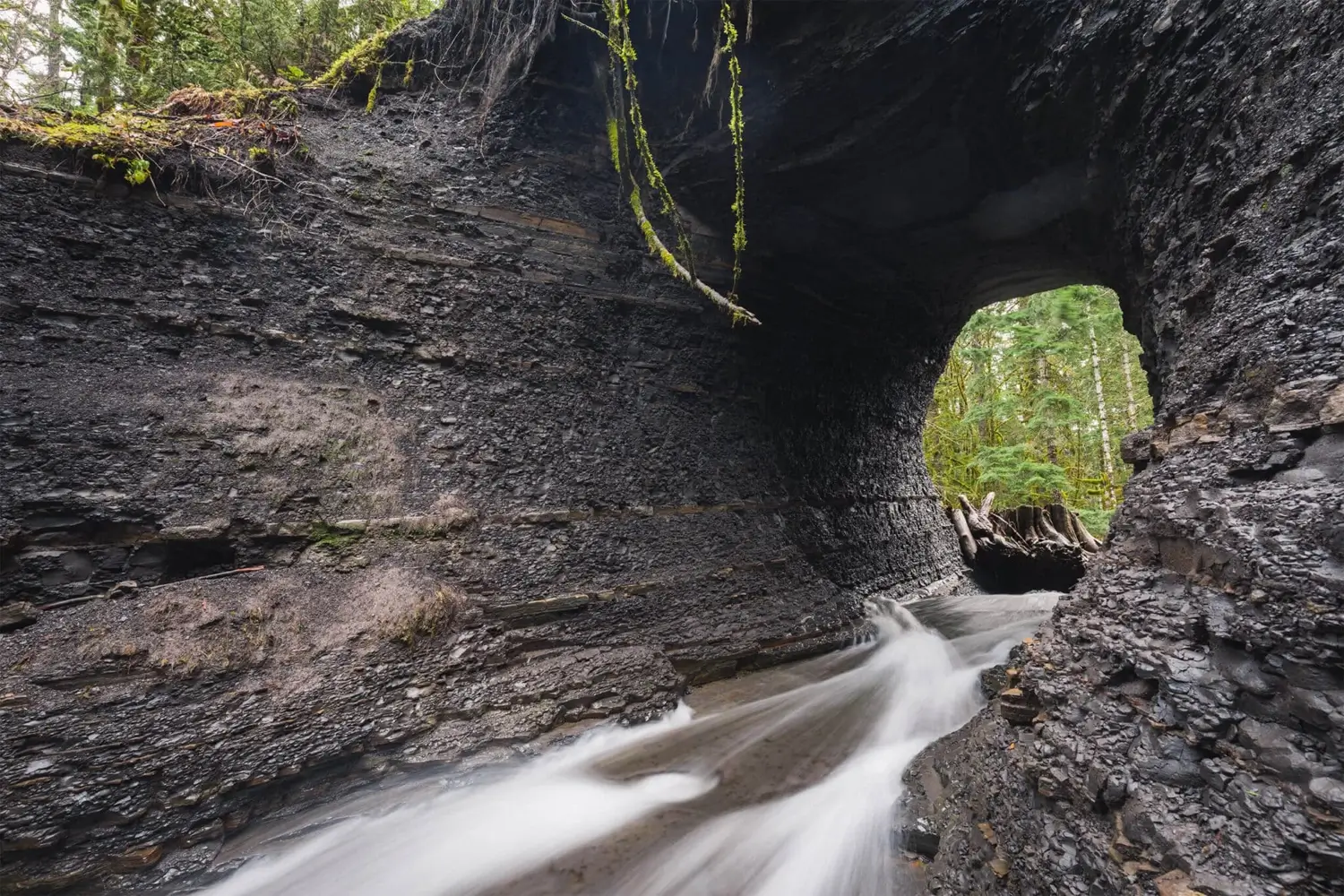
Hole in the Wall has in recent years become a popular local attraction close to Port Alberni. Once the site of a water pipe, the hole that was created through a steep cliff is now all that remains. This Port Alberni waterfall tends to almost completely dry up in the summer, so I definitely suggest visting after rainfall. The walk here is short and easy, which helps to explain its popularity.
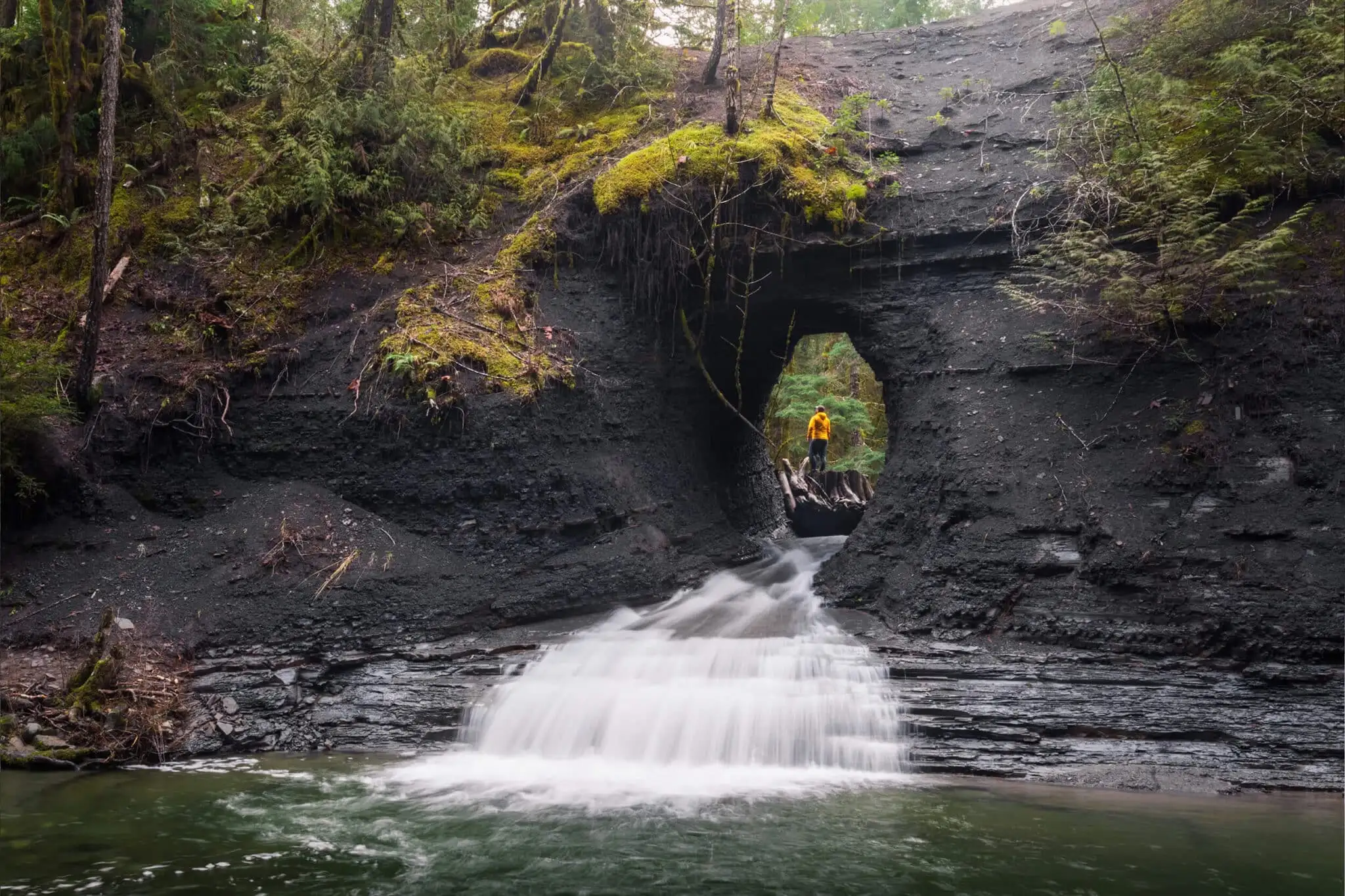
Rogers Creek Falls
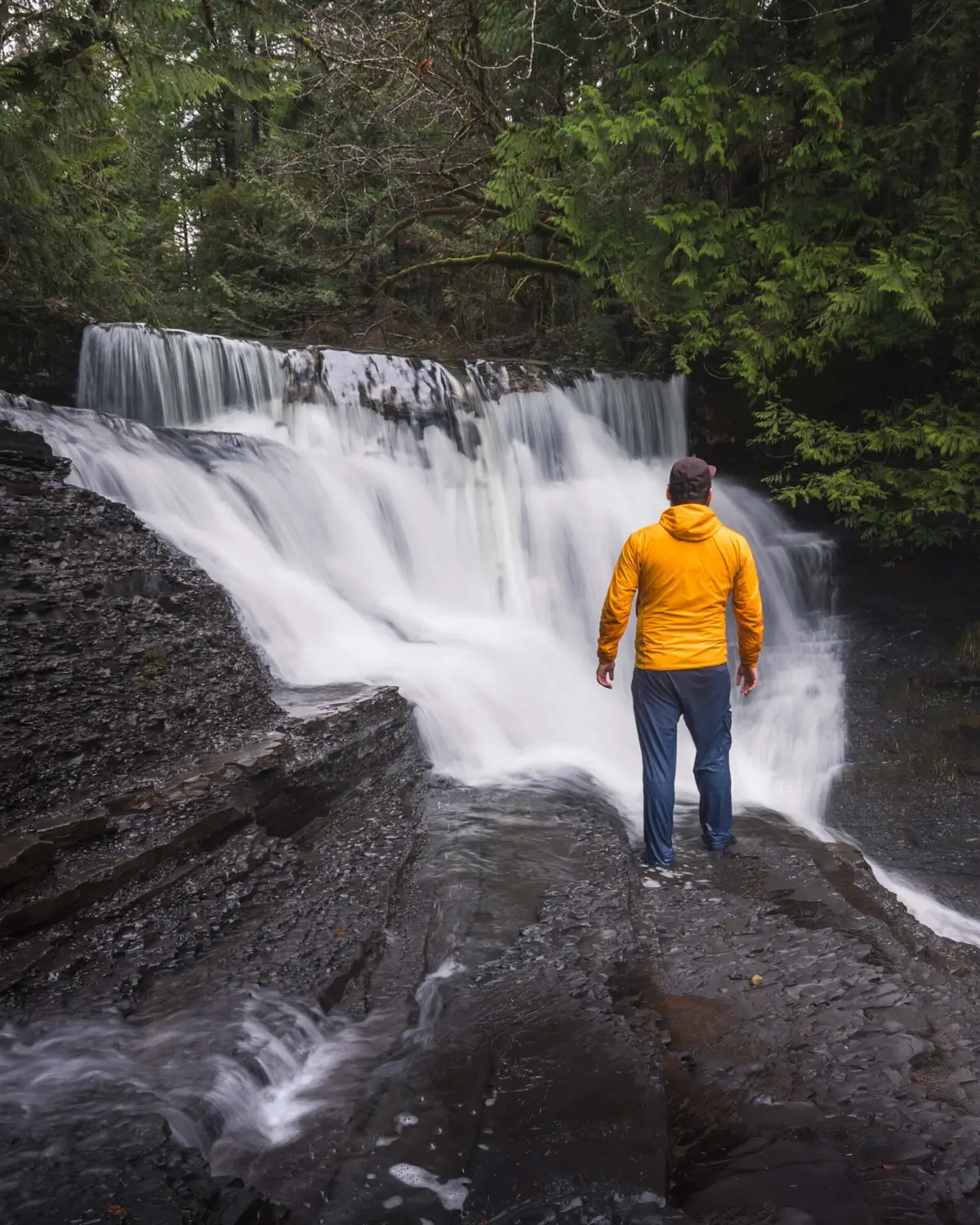
Located just a five minute walk downstream from the much more popular Hole in the Wall, Rogers Creek Falls is my favourite of the two attractions. This fantastic Port Alberni waterfall makes for a popular swimming spot in the summer, and the very short walk to get here makes it a great stop for the visitor just passing through.
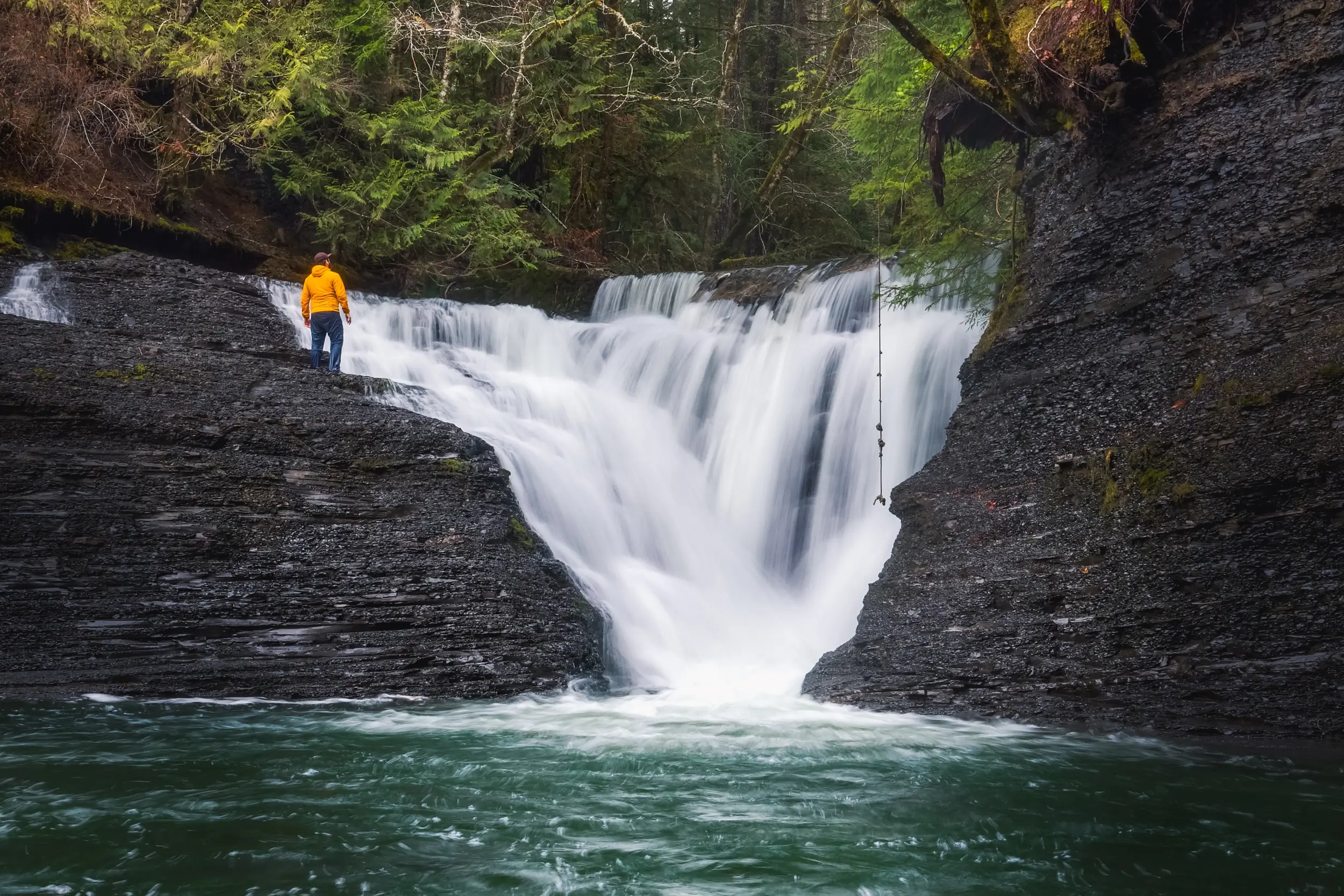
Snow Creek Falls
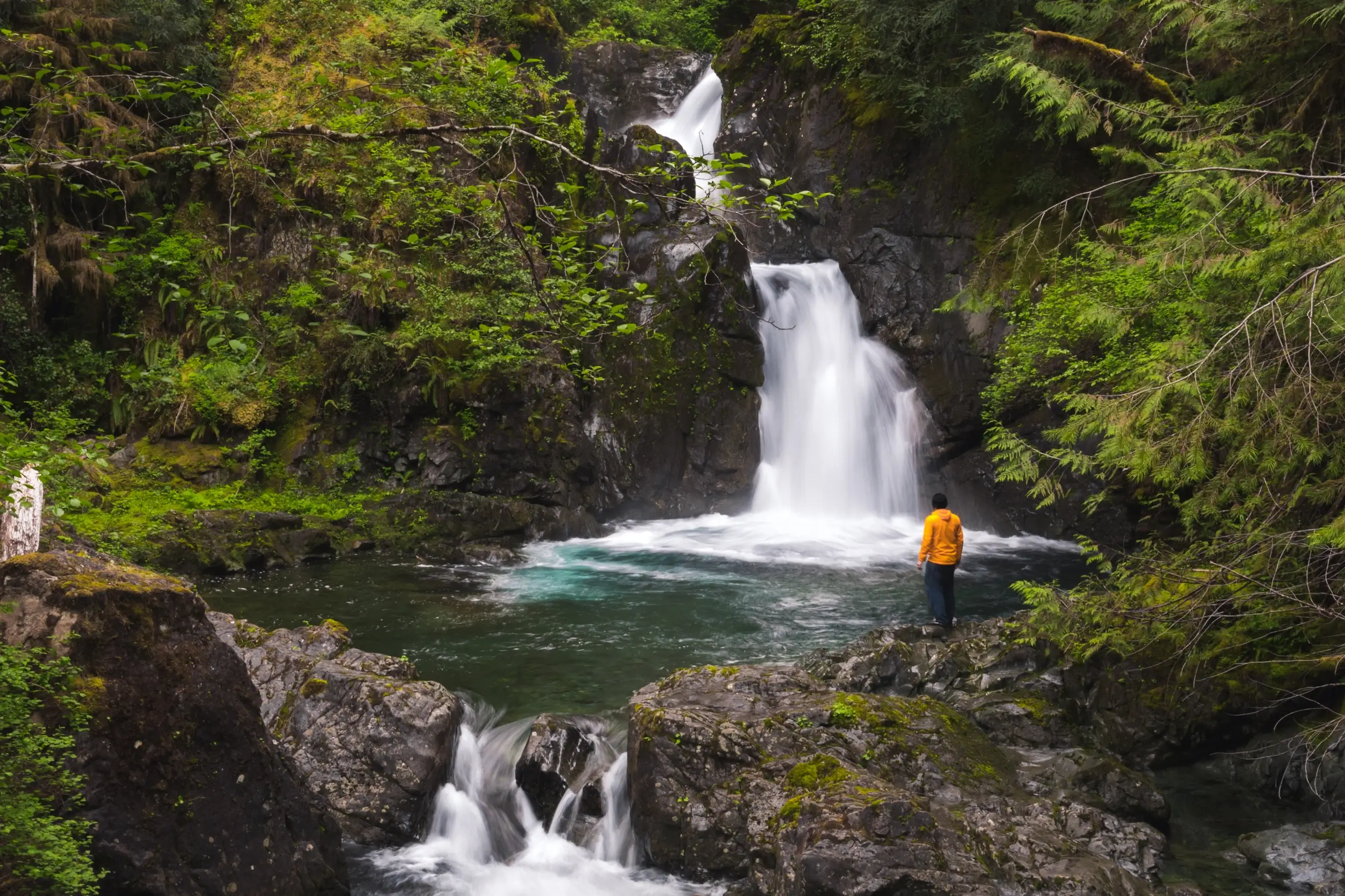
Snow Creek Falls is a fantastic waterfall just under an hour of Port Alberni on the south side of Sproat Lake. This attractive two-tiered waterfall is one of the road-accessible waterfalls on this list, making it very easy to see if you’re not a hiker. That said, a trail does follow up alongside Snow Creek revealing several other waterfalls further upstream.
Gemini Falls
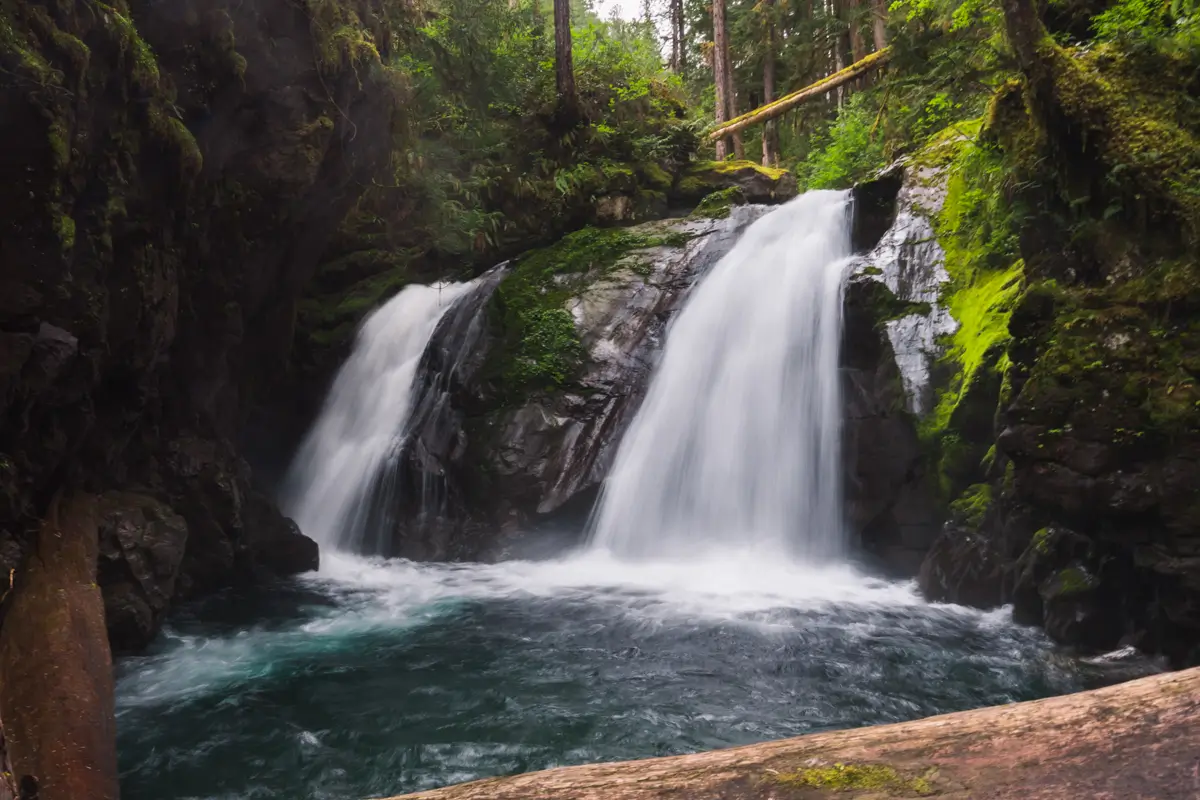
Unofficially named Gemini Falls is the second waterfall up Snow Creek and can be reached in a minute or two of walking up the trail from the road. This beautiful waterfall is my favourite of the falls on Snow Creek.
Galleon Falls
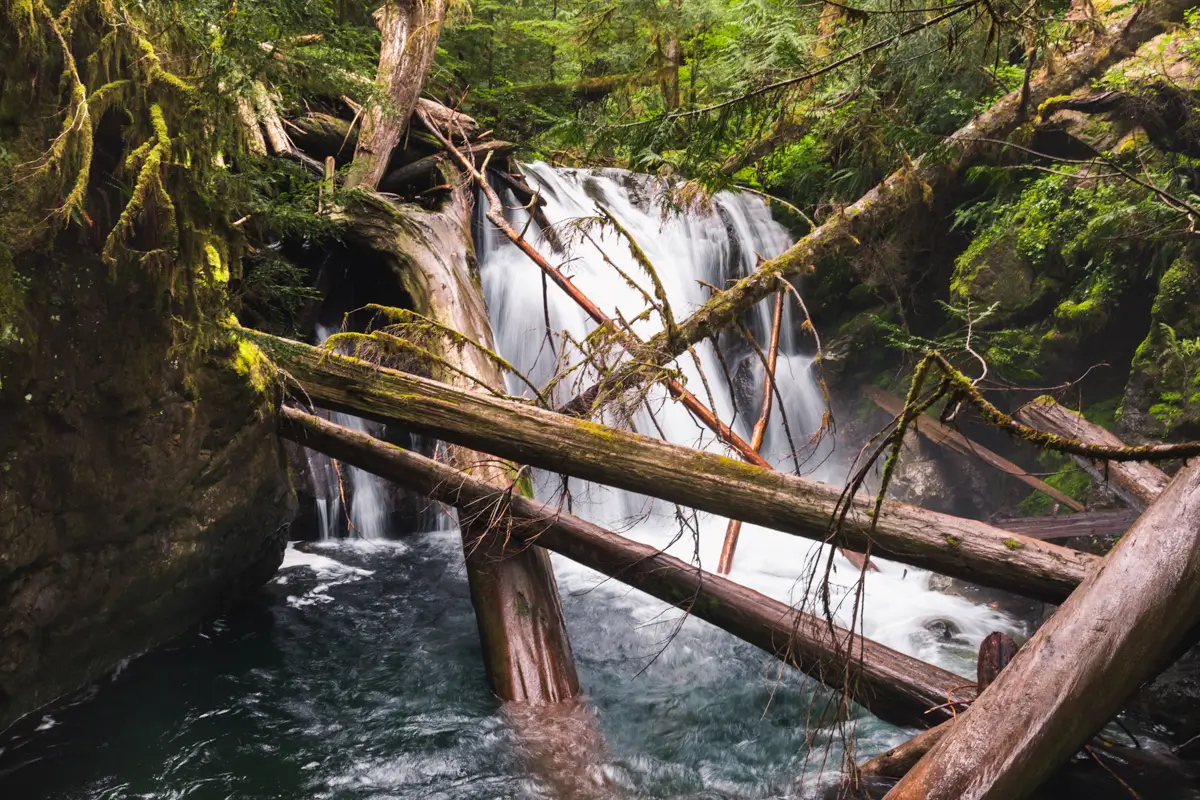
Unofficially named Galleon Falls is the third waterfall up Snow Creek. This powerful waterfall is only a few more minutes further upstream from the other waterfalls on Snow Creek. The Snow Creek trail leads right up alongside the waterfall allowing hikers fantastic views of the waterfall from above.
Tangled Falls
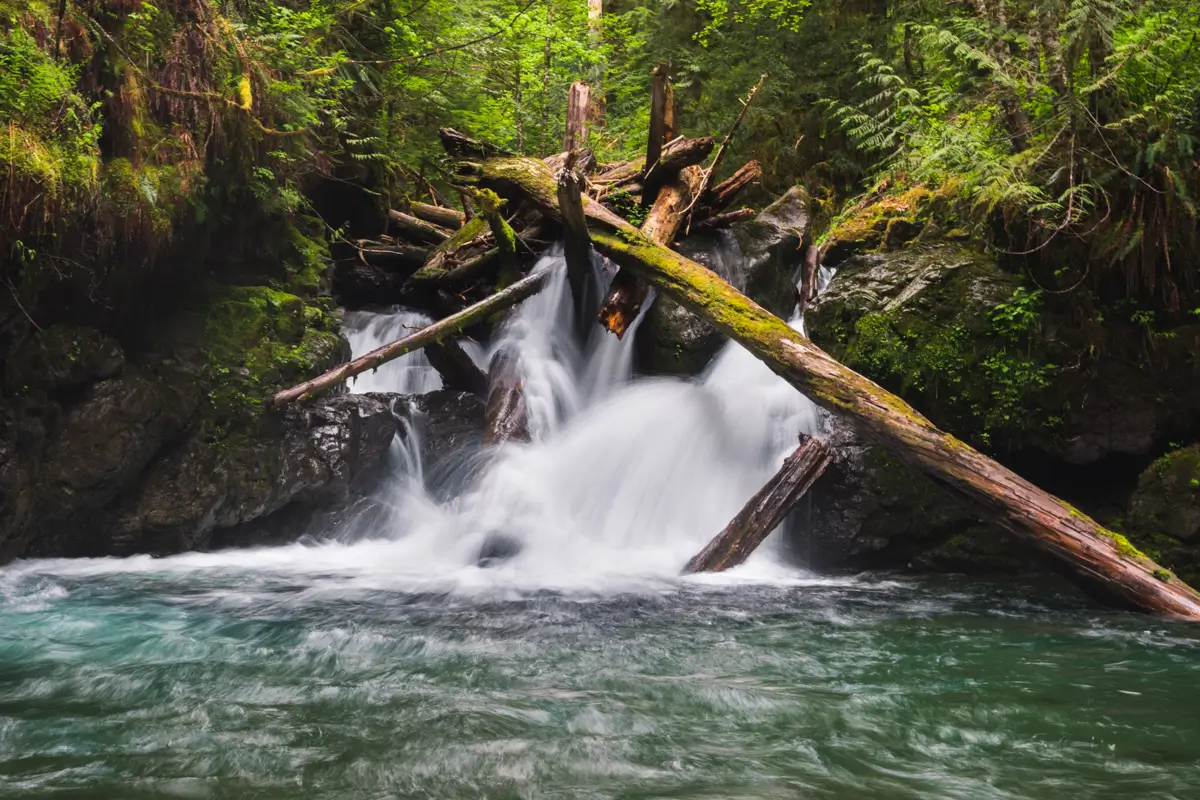
Tangled Falls is the fourth and final waterfall that the Snow Creek trail leads to. Like many of the other Snow Creek falls it’s choked with deadfall, but is a beautiful sight nonetheless.
Recommended Hiking Gear



Water is a must whenever I’m hiking, especially if the sun is going to be out. My favourite water filter I’ve used is the Katadyn BeFree 0.6L, which unlike other water filters I’ve used packs up really small and lightweight. For hikes where I know there won’t be any readily available water sources along the way, I make sure to bring my own. The Hydrapak Stow 1L bottle is my go-to, for the same reason that it’s made of a soft plastic that folds up and doesn’t take up any more extra space than necessary in my pack. Finally, Aquatabs are another great option for purifying water, with one tablet being suitable for one litre of water. I previously used the Grayl water filter while travelling internationally, and though I found its hard body more convenient for day to day use and easier to drink from, it has a little too much bulk for my fast-and-light style of hiking.



The secret to all my photos of gorgeous sunset and sunrise mountaintop views? A lot of hiking in the dark. And let me speak from personal experience when I say that the last thing that you want to happen when hiking is to be caught in the dark without a headlamp. I used the Black Diamond Spot 400 for years and it worked great – until I lost it on top of a mountain somewhere. The only downside to it was having to worry about the batteries dying, though there’s also a slightly more expensive version that has a rechargeable battery. Nowadays I’m using the Petzl Actik Core, which is a bit pricier than the more budget-friendly Black Diamond, but is also brighter, more comfortable (in my opinion), and has a hybrid power system that is rechargeable but can also take AAA batteries if needed.
You won’t see me using trekking poles on shorter hikes often – but on long hikes and backpacking trips, as well as certain scrambles, they are an absolute lifesaver. I’ve invested in a high quality ultra-lightweight pair of MSR DynaLock Ascent carbon poles which, while pricey, I don’t regret one bit. If you’re not entirely sure how much use you’re going to get out of a pair of trekking poles, the best budget-friendly option would be the Trekology Trek Z 2.0. Amazon does sell a lot of cheaper Made in China-style trekking poles for cheaper, but these usually are much much heavier and not worth buying.
All the best and most long-lasting cables and power banks I’ve ever owned have been Anker. I once had a phone cable from them that lasted me over three years of daily use! That’s why I keep an Anker PowerCore Essential 20K power bank on me. Like many people I use my phone for a lot of stuff when hiking (checking in with family, using online maps, taking photos, flying my drone) so I like to be prepared for that low battery warning by having a backup power source on me just in case.



The only socks I ever buy for myself are from Darn Tough, and I almost always make sure to wear them when hiking. After years of having no problems only wearing these comfortable and rugged socks for hikes, I accidentally wore a pair of no-name socks on a hike last year and ended up with blisters on both feet. Safe to say I’m back to sticking with the Darn Tough. And the best part? They have a lifetime guarantee, meaning that if they ever wear out you can send them back for a brand new pair. For hiking footwear I go between a pair of lightweight approach shoes for quick and dirty mountain ascents or anything involving scrambling and more heavy-duty boots for longer treks. I’ve worn a couple different versions of the lightweight but super durable Arc’teryx Konseal FL 2 approach shoes for a few years now and am very impressed with the durability. I also really like the thick toecap that keeps me protected every time I stumble into a root or large rock. For longer, tougher, or muddier treks I rely on my LOWA Camino EVO GTX, which I find insanely comfortable and made of very high quality.



I wear my Ar’teryx Gamma Lightweight Pants on every single hike I go on, and on many days when I’m not hiking. After several years of abuse they are still holding together extraordinarily well, with only a few small holes from where I’ve fallen down and some slight stains from being repeatedly coated with mud. They’re lightweight, breathable, and super comfortable. For lightweight and breathable hiking tops I’m a big fan of both the Patagonia Capilene Shirt and the MEC Core Shirt. My Arc’teryx Squamish Hoody shows up in a lot of my photos. It’s super lightweight and packable, and does a great job of cutting the wind while also being pretty breathable. I also have an Arc’teryx Atom Hoody and Arc’teryx Beta LT that I pull out for cooler or wetter conditions.
